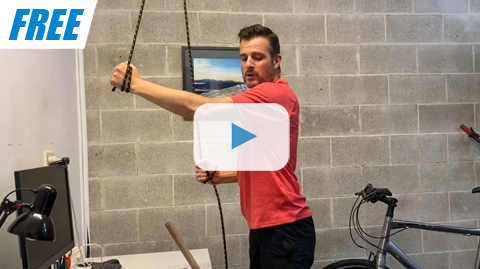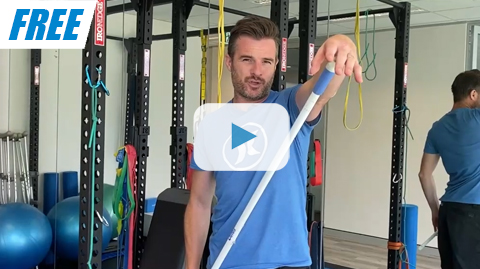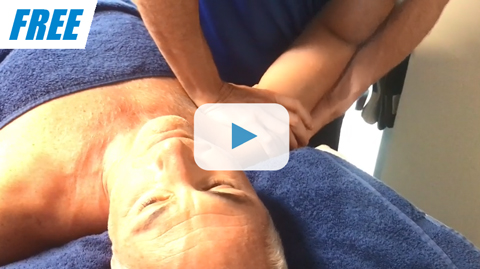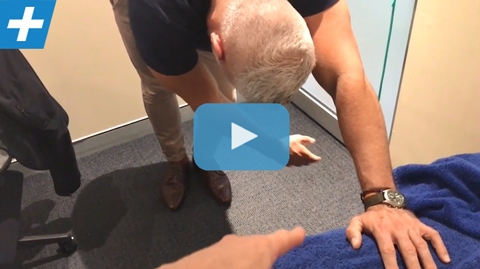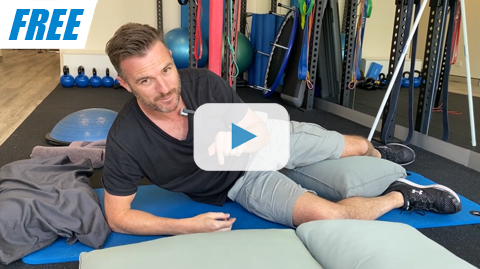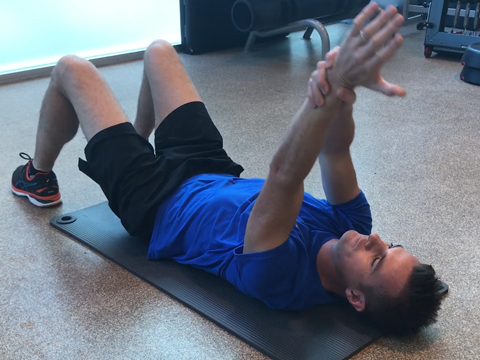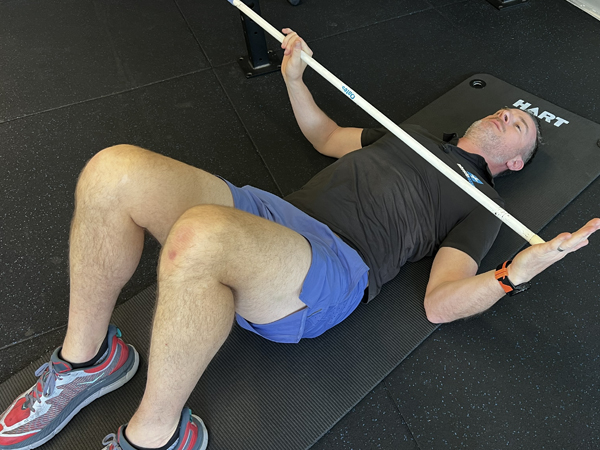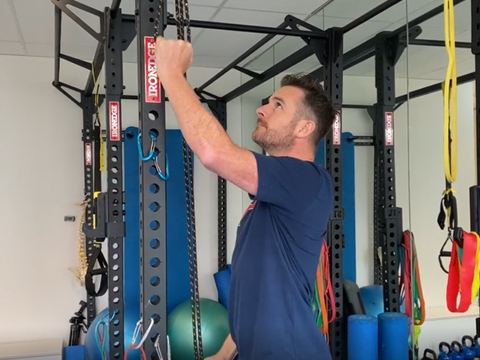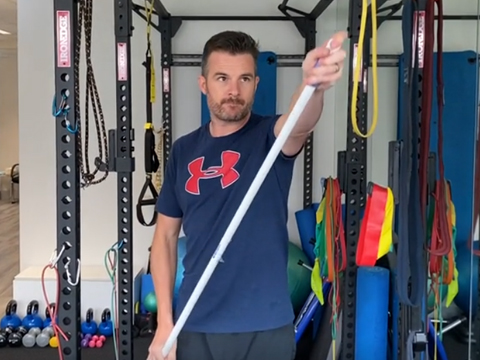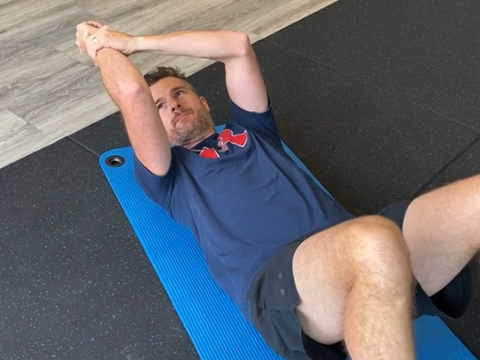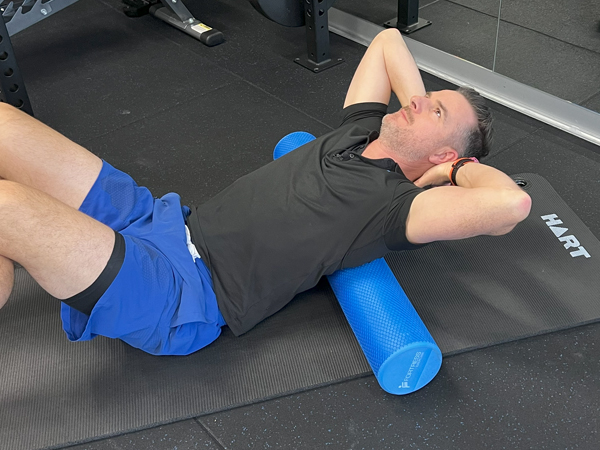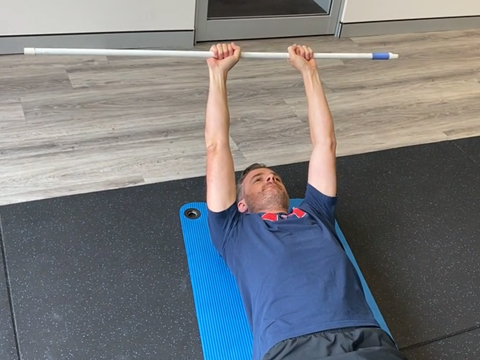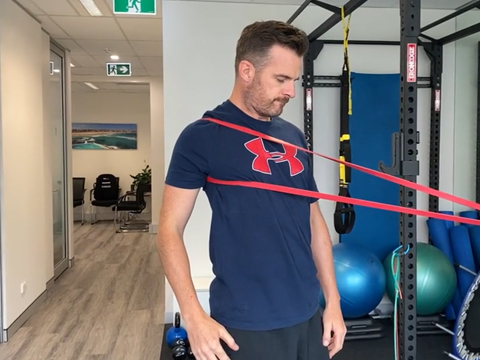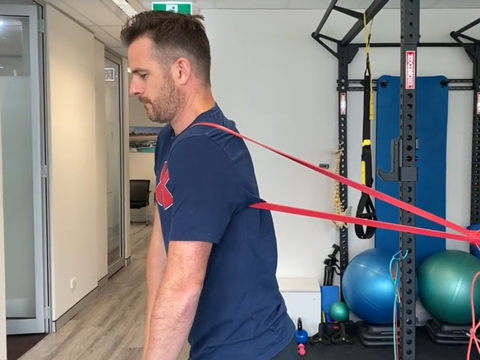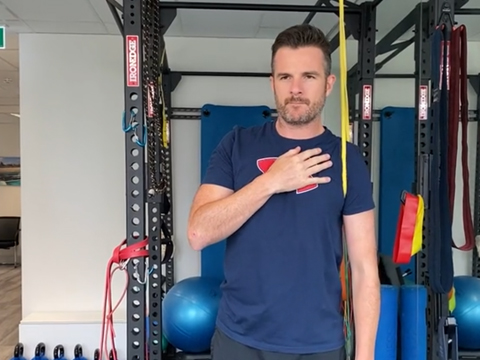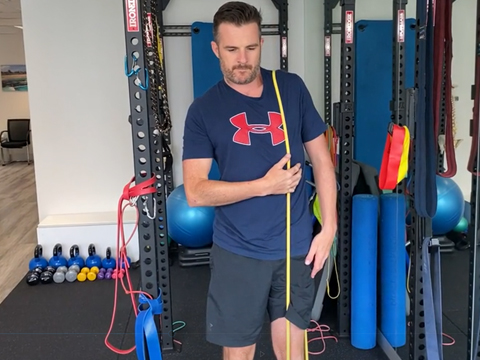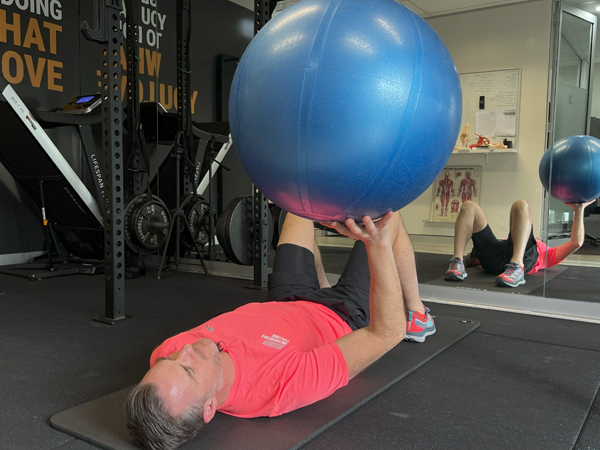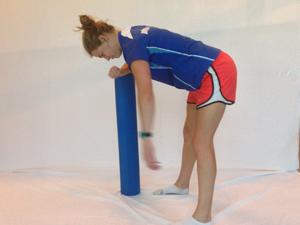Shoulder Injury and Surgery Rehab | Weeks 04-06

PROGRAM STAGE PRE-REQUISITES1) Complete the first 3 weeks and be at least 4 week post-operative / trauma.
2) Able to complete all the volume of exercises with reps and sets as prescribed. 3) Checked in with your Physio in Stage one and have the confirmation to continue into this stage. 4) Able to hold all static exercises at 10secs with no residual pain, as well as complete the mobility exercises at least up to the minimum limits of 0 external rotation, 60 deg abduction and 60 degrees flexion. |
Program InstructionsYou can now discontinue the sling during the day, but try to wear sling outside of home (school, work, shopping, etc.) and / or maintain shoulder support by putting your hand in pocket or belt loop. If your surgeon requires you to wear the sling all day then follow their protocol. Avoid going into pain that is above 3-4/10 level. A slight bit of pain and the end of range or a little muscle fatigue is ok, but nothing more and nothing that lasts for more than 2 hours after your rehab session.
Aim to complete the mobility exercises 2-3 times per day and the rehab exercises 1-2 sessions per day, EVERY day if possible over the next 3 weeks. From this week you should notice a change in the freedom of movement of the shoulder generally in mostly all of your PROM exercises that you do. You can go further into range if there is no pain but don’t push to stretching pain. The exercises this week advance slightly to start you passively abducting (arm away from body) up to 90° as able. Your new limit for external rotation (rotation outwards) is 20 degrees. DO NOT go beyond that unless your surgeon allows. Keep working on the scapular stabilisation exercises to improve your shoulder blade control, posture and base of support for the shoulder joint, in preparation for increasing scapular, weight-bearing. There are a few more exercises to help your mobility like the rope-pulley flexion exercise. You need to refrain from doing isometric strengthening work still at this stage while you heal, as active rotator cuff and shoulder strengthening and loading work will commence in the next stage (week 7). Therefore it's important that you build up the tone and activity in the shoulder in preparation with the passive-assisted exercises. The scapula band resisted exercises in this stage also help correct 'bad patterning' of the shoulder that has developed after all the pain, surgery and lack of use that has switched off the postural muscles and motor control mechanisms. As soon as you get up start on your exercises. You will wake up stiff and if you free it up early you will feel better immediately which helps you them and later in the day. External rotation maybe the first one to do in the morning as it will be the mostly relieving, then follow through with the others. Don’t skip exercises. Mix up the order too each day to add variety and see what works best for you. Sometimes a 3 circuits of one set for each exercise, works. Better than three sets of each exercise and then moving onto the next exercise. Focus on maintaining the 0 deg external rotation through your flexion movement in supine, and as much as you can with the pulleys and the standing wand. Towards the end of week 3 and into week 4 you might want to start doing a workout. You need to avoid resistance and load training right now as it may put too much stress on the system that’s trying to heal the shoulder, and at the same time you may tense the rotator cuff too much as well. So, my advice is to think about movement rather than strengthening and stick to body weight ex with some band options. You can even combine some of your shoulder mobility exercises into it if you want. Just watch the balance aspect and don’t get too adventurous! Into week 4 and here are the 2 exercises added in to this next ‘stage 2’. You’re still doing the previous exercises as well but make sure it’s “pure” movement this week especially with abduction and flexion. Your external rotation wand work will pay off here. OH, and don’t forget to use the squeeze ball still. Pump that fluid in the arm and keep the grip strength up. GOALS Flexion: 90-100 deg External Rotation 20 deg Abduction: 90-100 deg |
Special NotesSurgeons recommend SELF administered as well as therapist assisted scar tissue massage post surgery for mobilization of the post-surgical adhesions below the scar which helps in the passive movement of the tissues as well as pain, and prevents “stuck down” scars. As the range increases day to day so does the need for the scar to move freely
For people with some frozen shoulder you may feel a block type pain around the side to back of the shoulder on movements like external rotation and flexion. It also will ache at night and if you have had frozen shoulder before surgery and this is a familiar feeling them it is most likely that you still have it or getting it again. But it’s not a bad thing as it allows your shoulder to heal. If you have concerns I suggest you contact me on Telehalth me or consult your surgeon at the end of week 6 check up mark - which should be booked and not missed. This appointment gives you an opportunity to see if you are on track and voice any concerns you may have about your shoulder, exercises and progress. Ice at night may need to continue to help you sleep as well as using it during the day. As you are wearing out of the sling from last week through this week, you will find you are using it more in daily life. You can let it gently swing with walking (but not let it full swing) and still walk slower than normal. Keep the distance to a minimum like under 2-3 kms at a time. Your energy levels will be better his week but carefully you don’t overdo it, as well as overuse the arm. It will be easy to slip back into normal ha it’s of using your arm the more you are out of the sling. The sling at night should also be used less this week and some nights, if at all. Make sure you have a lot of pillows around to support it. A pillow under it if you are on your back, and hugging a pillow of you are on your side. Don’t sleep with the surgery side underneath. As long as you have enough ROM in the shoulder you should find you can hug a pillow. It may be uncomfortable a bit for a few days this week and you may need to change position a lot in the night which wakes you up. Quick movements and abduction is a no-no, as well as using it with any physical force, load or moderate stabilisation. Day to day chores like lifting, dragging and DIY needs to be avoided. You can’t use a screw driver in that hand, carrying garbage or use it above elbow height. You have to use the other arm for all loaded tasks. This will be hard if your surgical arm is the dominant one, and you will have to keep reminding yourself. Lifting pots, sweeping, vacuuming all have to be done one handed. To move you arm in bed into flexion or abduction when moving in bed use your other arm to gram you hand and move it passively. You are recommended to stay off work for 6 weeks especially if you are manual labour or carrying load, use your hands at like a physio or a bricklayer - they are both manually intensive jobs. If you work at an office desk and do not need to load your arm, you may did you have enough movement after 6 weeks to use a keyboard. 8 hours a day maybe too much and you don’t want to let it stiffen up or get sore. Aim to return to work AFTER you see your surgeon for the 6 week check up and get a clearance form him/her and return with less hours initially and build up as you are able. If you are in a manual job it’s recommend to be off work for 12 weeks. And then still returning lightly and only lifting or carrying what is allowed in the protocol at that point Carrying load limit: 1-2kgs No active movement Avoid hand behind back REMEMBER - You can’t afford to load it during this crucial healing stage. Just the weight of your arm on the shoulder is maximal at this point. There is to be no active rom exercise done in this stage it is all passive-assisted. Even using an phone and texting will make it fatigue of some for too long. You may even need sleeps in the afternoon to catch up on the lack of sleep at night and to help you rest and heal. |
